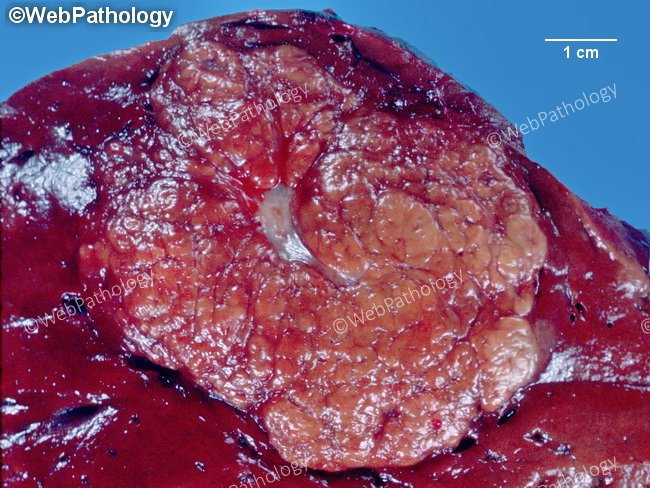Focal Nodular Hyperplasia : Clinical Features


Comments:
Clinical Features: Focal nodular hyperplasia (FNH) is most common in 3rd to 5th decades of life with a female predilection. Rare cases occur in children or men. Most cases are asymptomatic and discovered incidentally during upper abdominal imaging for unrelated reasons or for an enlarged liver. Large lesions may cause abdominal discomfort/pain due to compression of adjacent organs. Some cases are found during abdominal surgery or at autopsy. Rupture with hemoperitoneum is a rare complication. About 20% of cases are multicentric and may be associated with other vascular lesions, including cavernous hemangioma of the liver, portal vein thrombosis or atresia, Budd-Chiari syndrome, hereditary hemorrhagic telangiectasia, berry aneurysms, as well as brain neoplasms such as astrocytoma and meningioma. FNH is more common than hepatocellular adenoma and the two may coexist. Note the subcapsular location, nodularity, paler color than the surrounding liver, and the central fibrous zone in this gross specimen photograph.



